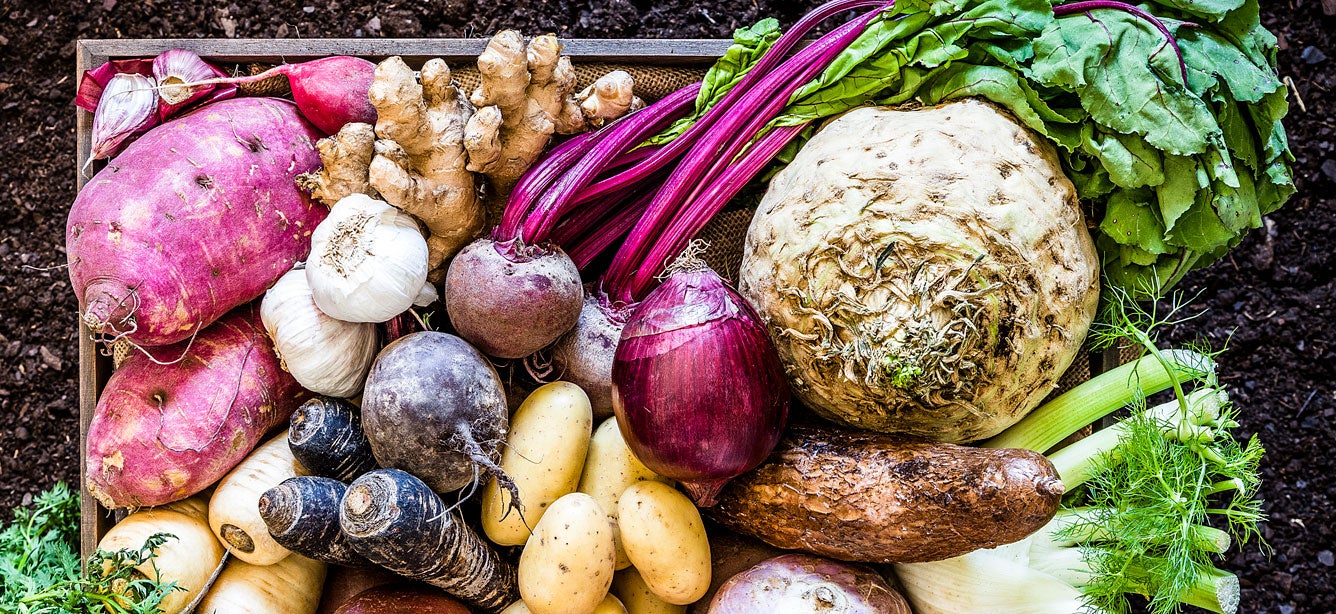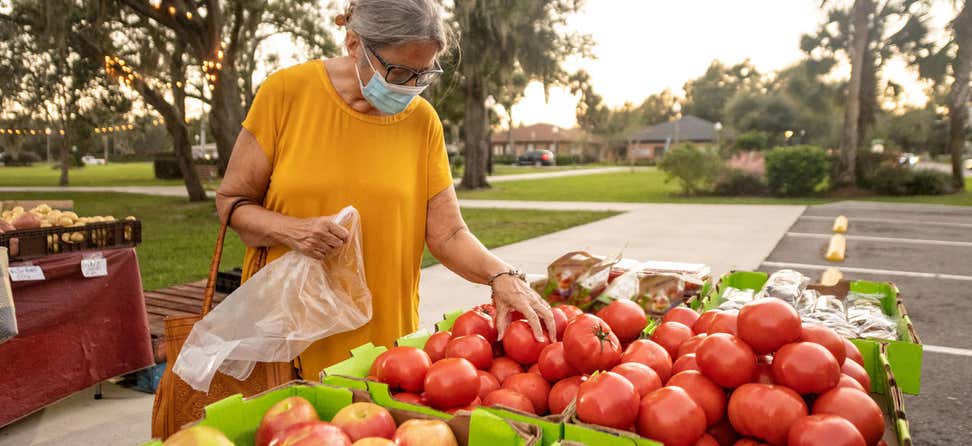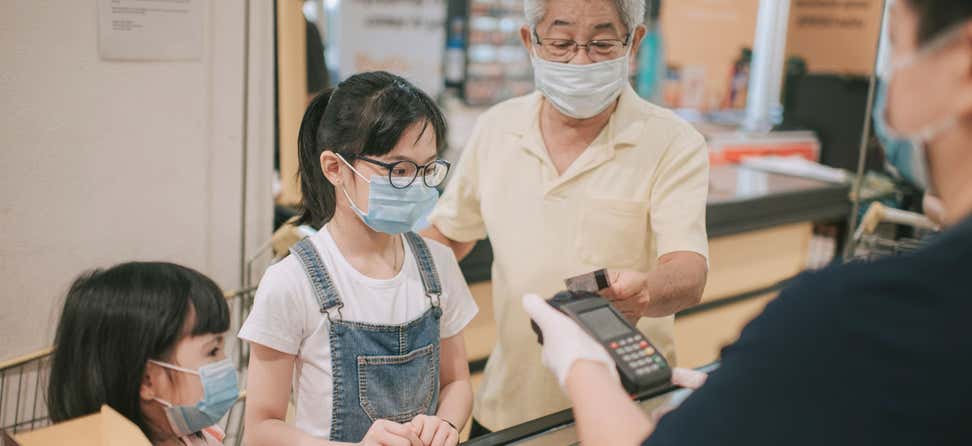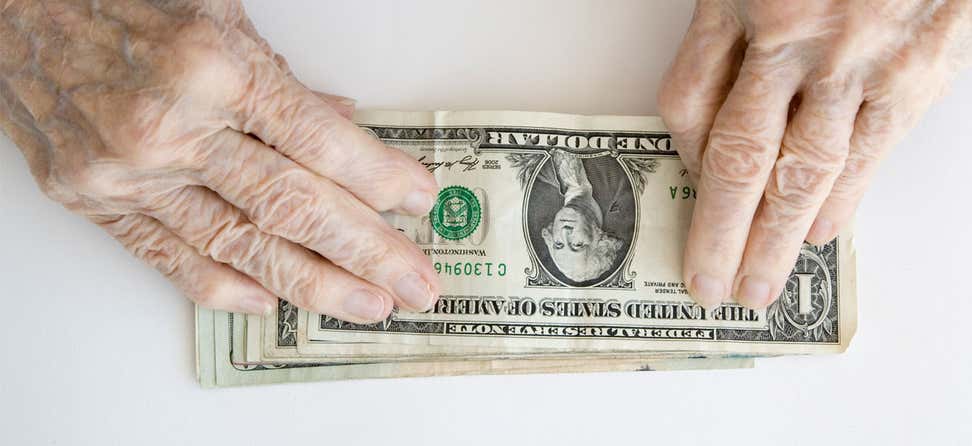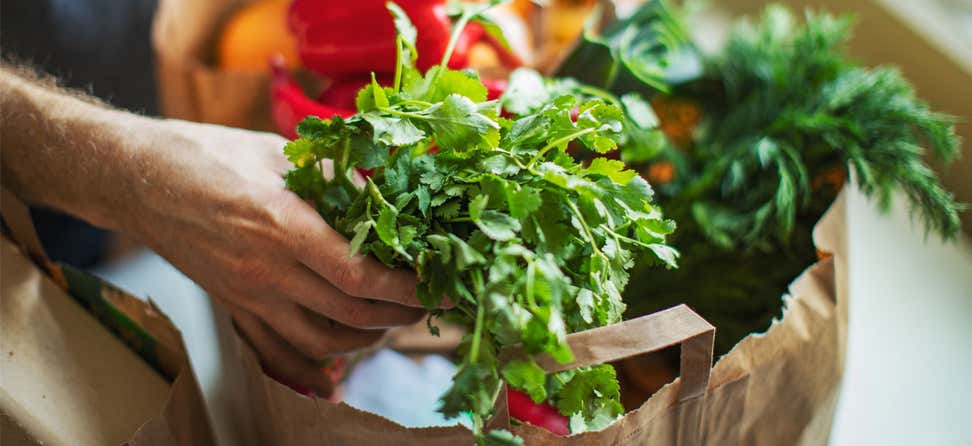Key Takeaways
Many older adults are facing a food crisis with COVID-19, experiencing trouble both affording and obtaining food.
A national network of food pantries and food banks, as well as benefits such as SNAP, can help alleviate food insecurity during the pandemic.
Find out what additional help may be offered in your area, covering a variety of needs, not just food assistance.
Affording healthy food is a challenge for many older Americans, but the spread of COVID-19 has made matters worse. Whether you’re facing difficult financial times or are unable to leave your home, there are resources that may be able to help.
Meals on Wheels
With a network of over 5,000 programs, Meals on Wheels is offered in nearly every community in America. Meals on Wheels volunteers are committed to continuing delivery of nutritious food to homebound older adults and ensuring their health and social well-being.
Enter your zip code to search for your local program.
Food Banks
Feeding America operates over 200 food banks and 60,000 food pantries across the United States, each serving a large area. Many food banks are adapting the way they serve their communities during the COVID-19 pandemic to follow physical distancing guidelines, such as setting up smaller community drop-off points.
Use the food bank locator tool to find one in your community.
SNAP/Food Stamps
The Supplemental Nutrition Assistance Program (SNAP) helps people to afford food at over 250,000 participating grocery stores and shops across the country. While you must have limited income to get SNAP, many older adults and persons with disabilities can deduct medical expenses above $35/month to help get SNAP and increase the amount of monthly SNAP benefits. Find your state’s SNAP application.
The USDA Food and Nutrition Service, which runs SNAP, has given states options to make it easier for families to get SNAP during the coronavirus pandemic, including not requiring a face-to-face interview, and temporarily raising the SNAP benefit to the maximum amount. Call your state hotline to see what may be offered in your area.
Remember: SNAP can only be used for purchasing food and seeds for growing food. It cannot be used to buy pet food, paper products, and other toiletries. However, changes to broaden what SNAP can be used for are being discussed at the state and federal level.
The Emergency Food Assistance Program (TEFAP)
This program provides food and nutrition help at no cost. If you meet the program guidelines, you can pick up the food from your local food pantries or soup kitchens.
The types of food you can get are different depending on where you live, but usually include a lot of shelf-stable items such as pasta, dried beans, canned fruits and vegetables, and soups. To find out how to apply for the program, please contact your State Agency. They can let you know if you meet the program guidelines and where you can get the food.
You can also find out whether you can get TEFAP, SNAP, and other food benefits by going to BenefitsCheckUp.org and completing a free, confidential screening.
Other Resources
Many communities are mobilizing local volunteers and resources to assist those in need during this pandemic. To find out what additional help may be offered in your area we encourage you to contact the following:
- Please call your state or local 211 service (or visit 211.org)
- The Eldercare Locator can connect you with a variety of services, including transportation and benefits. Dial 1-800-677-1116 (weekdays, 9 am – 8 pm EST)
- BenefitsCheckUp.org can help you find benefits that cover a variety of needs, not just food. Make sure to complete a full, confidential screening to learn what other financial assistance may be available to you.




